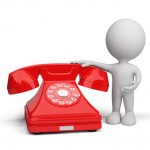 15 Life Saving Tips
15 Life Saving Tips
If you are considering how to survive a hurricane, the following 15 tips need to form a basis for your evacuation or “ride it out” plan. These are tips and survival pointers recommended by the Weather Channel, NOAA and survival experts. Avoid the 7 Deadly No-Nos of how to survive a hurricane, and make sure you remember the 7 Survival Musts, and you and your family can safely make it through one of nature’s most unpredictable and disruptive weather formations. Your preparedness efforts should take place ahead of time so that you are not scrambling to get supplies and find safe options during the threat. The bottom of this article includes some resource links to agencies that provide valuable information for hurricane survival, as well as links to emergency preparedness destinations that offer emergency survival kits geared to both general and hurricane survival emergencies, as well as pet survival kits.
How To Survive a Hurricane – 8 Survival Musts
 1 – Make and practice an escape plan that you can employ the minute a hurricane warning has been issued. You should include multiple exit routes in the event that one or more of them cannot be accessed due to weather conditions. Your evacuation plan should be practiced by your family to ensure the process is clear prior to an actual emergency in which people can panic. Once the winds reach a dangerous force in a hurricane, evacuation and preparedness efforts are really not possible.
1 – Make and practice an escape plan that you can employ the minute a hurricane warning has been issued. You should include multiple exit routes in the event that one or more of them cannot be accessed due to weather conditions. Your evacuation plan should be practiced by your family to ensure the process is clear prior to an actual emergency in which people can panic. Once the winds reach a dangerous force in a hurricane, evacuation and preparedness efforts are really not possible.
 2 – Make sure you have a hurricane survival kit that accommodates all members of your survival party, as well as your pets. The kit should cover all your survival needs for a short term emergency situation, but you should also have a long term survival plan in place should the hurricane cause catastrophic loss of property or services. There are a number of preparedness companies that sell ready made emergency survival kits, hurricane survival kits and seven pet survival kits to make this step very easy. Naturally creating your own DIY survival kit is also an option and a great idea for those who have any type of special needs.
2 – Make sure you have a hurricane survival kit that accommodates all members of your survival party, as well as your pets. The kit should cover all your survival needs for a short term emergency situation, but you should also have a long term survival plan in place should the hurricane cause catastrophic loss of property or services. There are a number of preparedness companies that sell ready made emergency survival kits, hurricane survival kits and seven pet survival kits to make this step very easy. Naturally creating your own DIY survival kit is also an option and a great idea for those who have any type of special needs.
 3 – Secure your property – there are a number of things you can do to secure your property to minimize the damage incurred during a hurricane. Supplies for fortifying your property should be purchased well in advance to ensure you have them on hand when needed. You will typically have some advanced notice when a hurricane threat is possible, and you will have the time to carry out these functions if you already have the supplies on hand. You can board your windows with plywood. You should use alligator tape and not duct tape or masking tape, neither of which will prohibit your windows from shattering. Many people are not aware that you can actually fasten straps and clips to your roof to secure it during high winds. Propane tanks should be turned off, and all loose debris and furniture should be secured before the winds start flying. Garage doors should also be secured and fortified.
3 – Secure your property – there are a number of things you can do to secure your property to minimize the damage incurred during a hurricane. Supplies for fortifying your property should be purchased well in advance to ensure you have them on hand when needed. You will typically have some advanced notice when a hurricane threat is possible, and you will have the time to carry out these functions if you already have the supplies on hand. You can board your windows with plywood. You should use alligator tape and not duct tape or masking tape, neither of which will prohibit your windows from shattering. Many people are not aware that you can actually fasten straps and clips to your roof to secure it during high winds. Propane tanks should be turned off, and all loose debris and furniture should be secured before the winds start flying. Garage doors should also be secured and fortified.
 4 – Always keep a minimum of 90 days of emergency food, water, appropriate clothing, light, heat and medications on hand. This is in addition to your emergency survival kit or bug out bag that meets your initial needs during a short term emergency such as damage from a powerful hurricane. When you are planning your 90 day food supply or short term food supply, remember that power may not be available for storage or preparation, so you should plan for alternative solutions for cooking. There are a number of portable options available that are easy to store and don’t require power.
4 – Always keep a minimum of 90 days of emergency food, water, appropriate clothing, light, heat and medications on hand. This is in addition to your emergency survival kit or bug out bag that meets your initial needs during a short term emergency such as damage from a powerful hurricane. When you are planning your 90 day food supply or short term food supply, remember that power may not be available for storage or preparation, so you should plan for alternative solutions for cooking. There are a number of portable options available that are easy to store and don’t require power.
 5 – A crank powered emergency radio will keep you informed on the go, or if you hunker down in your home or emergency shelter. It is imperative that you are able to obtain current emergency information concerning the weather, resources and evacuation during this time, and since power may be lost, a crank radio will meet this need. Those of you with the ability to secure an emergency generator will find your survival experience is much more comfortable should power be lost for a significant amount of time.
5 – A crank powered emergency radio will keep you informed on the go, or if you hunker down in your home or emergency shelter. It is imperative that you are able to obtain current emergency information concerning the weather, resources and evacuation during this time, and since power may be lost, a crank radio will meet this need. Those of you with the ability to secure an emergency generator will find your survival experience is much more comfortable should power be lost for a significant amount of time.
 6 – If indoors, stay away from windows. This means even if the weather doesn’t look terrible at the moment. There are lulls during storms, and this does not mean that there is no danger or that the storm is over. Don’t let a deceptive lull in mother nature’s fury trick you – this could simply be the storm’s eye, not its end.
6 – If indoors, stay away from windows. This means even if the weather doesn’t look terrible at the moment. There are lulls during storms, and this does not mean that there is no danger or that the storm is over. Don’t let a deceptive lull in mother nature’s fury trick you – this could simply be the storm’s eye, not its end.
 7 – Remember that a slow-moving hurricane could last for more than 12 hours, and winds and rain can continue for days. Planning is essential here. You could potentially be without power during this time, so make sure you have considered how you will eat and stay warm during this time, as well as how you will be entertained. There may be no TV, Internet or video games available, so make sure you’ve got some board games, books and things to do to keep from going stir crazy should the storm or aftermath last long enough to keep you indoors or without power for an extended period of time.
7 – Remember that a slow-moving hurricane could last for more than 12 hours, and winds and rain can continue for days. Planning is essential here. You could potentially be without power during this time, so make sure you have considered how you will eat and stay warm during this time, as well as how you will be entertained. There may be no TV, Internet or video games available, so make sure you’ve got some board games, books and things to do to keep from going stir crazy should the storm or aftermath last long enough to keep you indoors or without power for an extended period of time.
 8 – Plan for and call an emergency contact to let them know where you are headed and how your family is doing before, during and after the hurricane. You should also make sure everyone has the mobile apps and a list of numbers for the most reliable local and national weather advisory and survival agencies on hand. We have listed several of them at the bottom of this page.
8 – Plan for and call an emergency contact to let them know where you are headed and how your family is doing before, during and after the hurricane. You should also make sure everyone has the mobile apps and a list of numbers for the most reliable local and national weather advisory and survival agencies on hand. We have listed several of them at the bottom of this page.
How To Survive a Hurricane – 7 Deadly No Nos
 1 – Do not use open flames or candles if the wind is blowing where you shelter. You don’t need a fire on top of a hurricane to compound your survival situation. If you are hunkering down at home, all propane tanks should be turned off during the threat.
1 – Do not use open flames or candles if the wind is blowing where you shelter. You don’t need a fire on top of a hurricane to compound your survival situation. If you are hunkering down at home, all propane tanks should be turned off during the threat.
 2 – Resist the temptation to take a peek outside. Those few curious seconds could be the last you spend on earth. Not only can appearances of a lull in the storm be misleading, flying debris can be fast and come out of nowhere!
2 – Resist the temptation to take a peek outside. Those few curious seconds could be the last you spend on earth. Not only can appearances of a lull in the storm be misleading, flying debris can be fast and come out of nowhere!
 3 – Don’t use a generator without ventilation. Slow carbon monoxide buildup can lull you into a false sense of peace and serenity, right before it kills you. If the power is out, carbon monoxide alarms may not function properly, and may not sound a warning when they should.
3 – Don’t use a generator without ventilation. Slow carbon monoxide buildup can lull you into a false sense of peace and serenity, right before it kills you. If the power is out, carbon monoxide alarms may not function properly, and may not sound a warning when they should.
 4 – Do not drive like a maniac. Haste makes waste (and possibly injury or death), especially when the roadways are littered with debris, heavy rains and other factors driven by a powerful hurricane. There is no point in evacuating or rushing to your home or emergency shelter if you don’t arrive alive.
4 – Do not drive like a maniac. Haste makes waste (and possibly injury or death), especially when the roadways are littered with debris, heavy rains and other factors driven by a powerful hurricane. There is no point in evacuating or rushing to your home or emergency shelter if you don’t arrive alive.
 5 – Do not forget the 24-hour rule. Most foods can last up to 24 hours in your unopened refrigerator, but that is pushing it. You should not take chances with any perishable foods. Food poisoning and other potential hazards from spoiled food are not going to make your survival situation any easier or less complicated, particularly when medical care may not be easily accessible.
5 – Do not forget the 24-hour rule. Most foods can last up to 24 hours in your unopened refrigerator, but that is pushing it. You should not take chances with any perishable foods. Food poisoning and other potential hazards from spoiled food are not going to make your survival situation any easier or less complicated, particularly when medical care may not be easily accessible.
 6 – Do not panic. Is this is your first hurricane, stay calm, use your head, plan ahead and you can make it through safely. As a Floridian myself, I’ve been through many hurricane seasons. Some where more challenging than others, and there certainly were times I utilized my emergency preparedness plans, supplies and hurricane survival gear, but none of it was more than I could handle, even in my inexperienced days when I was new to it all.
6 – Do not panic. Is this is your first hurricane, stay calm, use your head, plan ahead and you can make it through safely. As a Floridian myself, I’ve been through many hurricane seasons. Some where more challenging than others, and there certainly were times I utilized my emergency preparedness plans, supplies and hurricane survival gear, but none of it was more than I could handle, even in my inexperienced days when I was new to it all.
 7 – Don’t do anything without thinking first. Seriously, think, rethink and rethink again any action you are about to take, and consider whether it will negatively impact your ability to survive a hurricane. This ties in directly with #6 and not panicking.
7 – Don’t do anything without thinking first. Seriously, think, rethink and rethink again any action you are about to take, and consider whether it will negatively impact your ability to survive a hurricane. This ties in directly with #6 and not panicking.
![]() Hurricane season is a reality for millions of people around the world. They expect it each year and are generally on board with at least minimally preparing for it. We hope that more and more people will begin to take legitimate hurricane survival prepping more seriously as the emergency preparedness trend gains momentum. Here is a listing of some valuable emergency resources and agencies to keep on hand if you are in a hurricane relevant region. Many of these agencies also have apps available and if you have room on your smartphone or tablet, we recommend you download these apps. If you don’t have room, we suggest you make some.
Hurricane season is a reality for millions of people around the world. They expect it each year and are generally on board with at least minimally preparing for it. We hope that more and more people will begin to take legitimate hurricane survival prepping more seriously as the emergency preparedness trend gains momentum. Here is a listing of some valuable emergency resources and agencies to keep on hand if you are in a hurricane relevant region. Many of these agencies also have apps available and if you have room on your smartphone or tablet, we recommend you download these apps. If you don’t have room, we suggest you make some.
The Weather Channel – Hurricane Central
National Oceanic and Atmosphere Administration – National Hurricane Center
Comments are closed